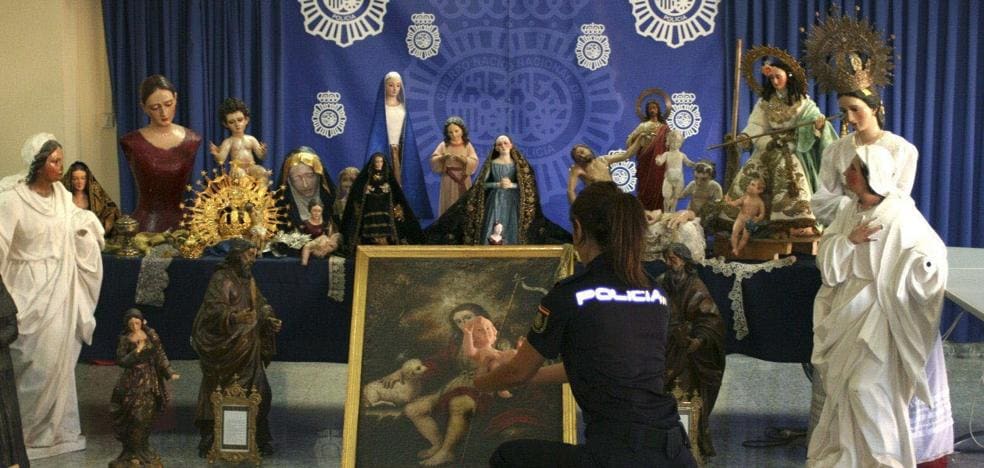Erik ‘el Belga’, now deceased, was one of the best known forgers and thieves of works of art in this country. He rested in retirement from Malaga until his death in 2020 after a busy life, including jail; and he tried to reconcile his criminal past with his Christian fervor by donating works of art to churches, towns and museums, always referring to religious images.
In April 2002, he gave a large painting with a painting of the patron saint of the town of Cúllar after learning of the unrest among the neighbors because the image of the Virgen de la Cabeza had been stolen, whose economic value amounted to 12,000 euros, but the religious value to these neighbors was priceless. The town of Cúllar dedicated a small museum to him thanks to the works that he gradually gave up.
The connection of Erik ‘el Belga’ with Granada has nothing to do with the thefts of sacred art that have been carried out in Granada in recent years and whose delay in being reported has always been a problem for police investigators. Without going any further, the Salesian Brotherhood of Christ of the Redemption and Our Lady of Health denounced on March 25 the theft of a silver dagger released in 2016 in a religious image. National Police returned it to the brotherhood a few days ago after recovering it. The person who delivered it said it was found in a garden last December. “Sometimes we find carvings or religious objects that we don’t even know have been stolen from churches or convents, they usually take a long time to report and that is a problem for the investigation», Says a police source close to the investigation. The brotherhood has congratulated the National Police for the resolution of the case.
Saint Margaret of Cortona
The Poor Clare nuns who occupied the convent of Los Angeles, now closed, on Molinos Street, also did not notice the theft of the sculpture of Santa Margarita de Cortona until it was recovered from a New York gallery, where it was going to be sold for 350,000 euros. Despite the time it had been stolen, the National Police Heritage unit managed to locate the alleged thief despite the time that had elapsed, who was found in his home in Maracena 200 religious pieces whose provenance is still being investigated a year later. If it is known that 90% are authentic religious works of art, another thing is the value they have, because apparently there is only one carving of Pedro de Mena that may be of some interest.
Must dating back to 1985 when paintings from the 15th to 18th centuries were stolen from the Museo de la Abadía del Sacromonte, mainly, as well as two caskets and a crown, among other belongings, to attend a high-profile robbery of sacred art in Granada.
“There are no organizations behind these thefts of religious art registered in the province. They are specific robberies and the perpetrators are usually people from the environment or common crime “, point out from the Civil Guard. Last year, the Armilla Research area of the armed institute managed to arrest the alleged perpetrator of the theft of a bell from the hermitage of the mining town of Alquife. A bell dating from 1960 that was stolen in 2016 in the church of the mining town of Los Pozos de Alquife. It also took a long time to report it and despite this he has recovered.
There was also another detainee in SantaFe in 2018 after the recovery of a carving of San Juan Bautista Niño with nimbus, sacramental labarus and silver shell, from the 18th century, which had been stolen from the chapel of the Virgen del Rosario de Santa Fe, last December 2016 and later sold online.The delay in reporting delayed the Civil Guard investigation.
– .


